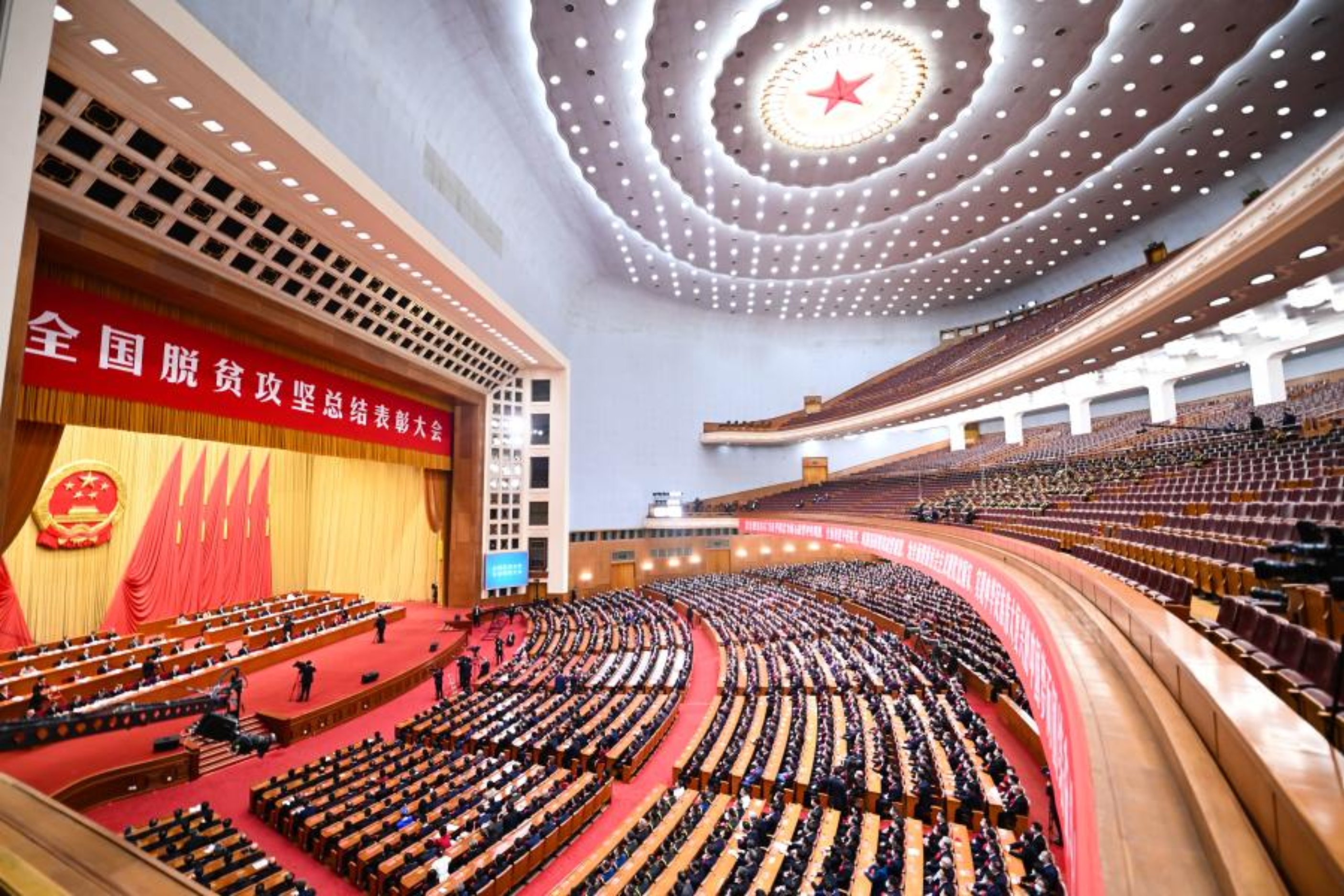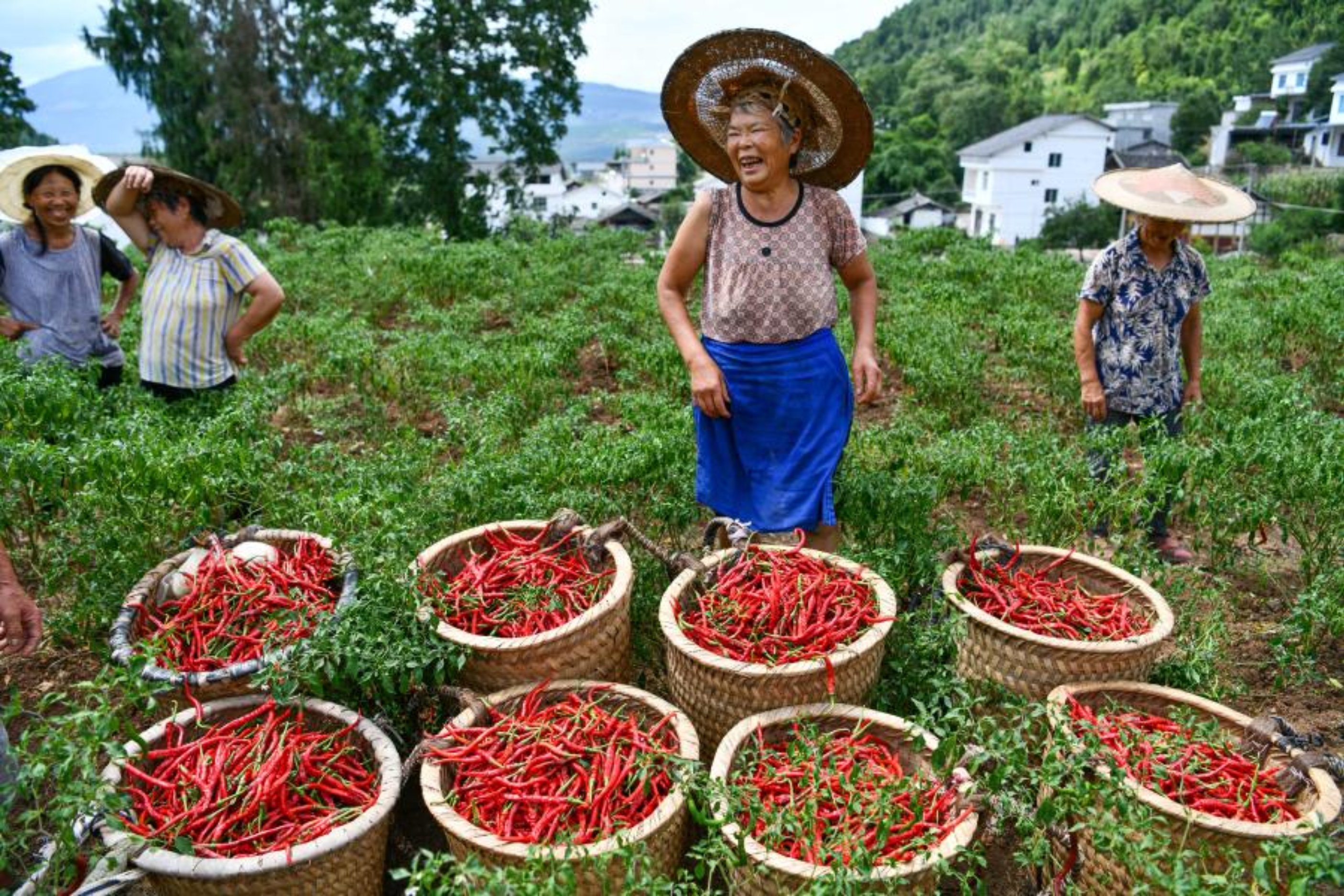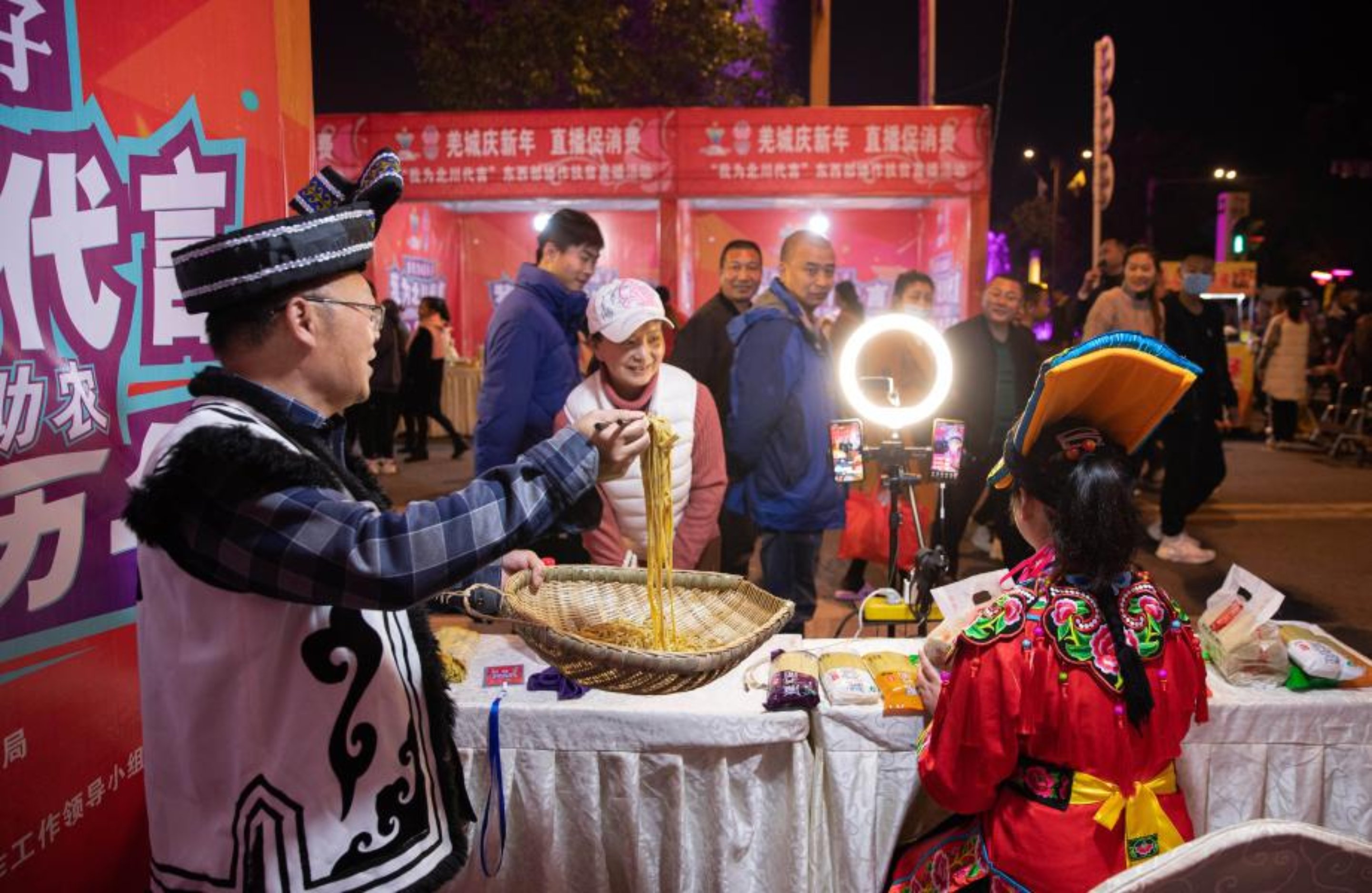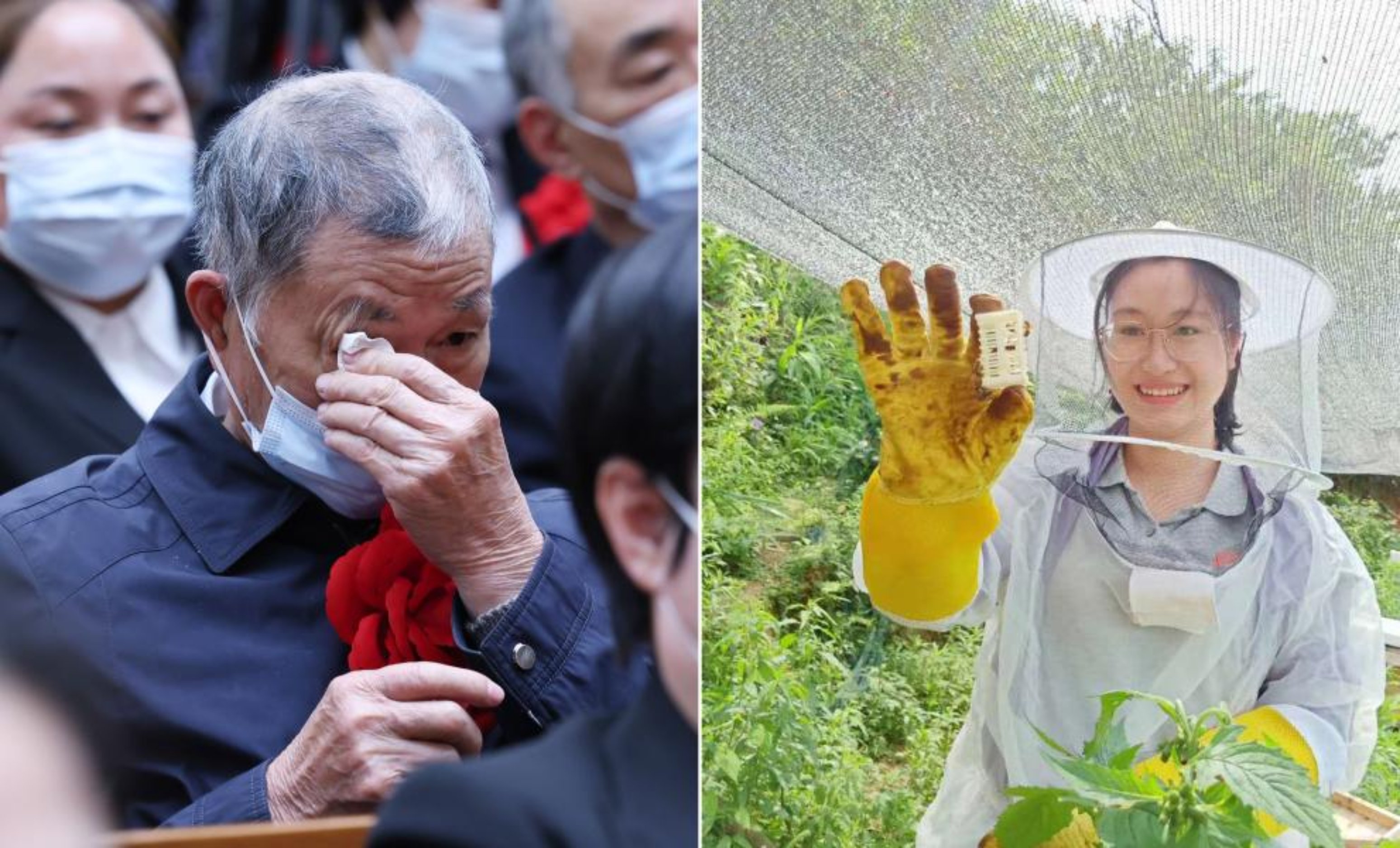China Focus: Is China's poverty cure replicable?
Source: Xinhua| 2021-02-25 23:40:39|Editor: huaxia
BEIJING, Feb. 25 (Xinhua) -- When Mao Zedong stood on Tian'anmen Rostrum in Beijing to declare the birth of New China in 1949, a Herculean task stood before him and the Communist Party of China (CPC) that he led: feeding and clothing 540 million Chinese people, nearly 90 percent of whom lived in rural areas.
"Poverty is not socialism," "socialism means eliminating poverty," and "we must keep abreast of the times; that is the purpose of our reform," said Deng Xiaoping, the visionary chief architect of China's reform and opening-up which began in 1978 when the country's incidence of rural poverty was 97.5 percent.
Eradicating poverty is a war China must win, with the hardest and most arduous tasks lie in the country's rural areas and poverty-stricken regions.
In 2020, all of China's nearly 100 million rural residents living below the current poverty line shook off poverty after eight years of arduous efforts. The historical feat of eradicating absolute poverty as scheduled was a hard-won victory for the nation's 1.4 billion people led by the CPC Central Committee with Xi Jinping at its core, who have not only the vision but also the determination to win the war against poverty.
Poverty is one of the world's most vexing problems. Ending poverty in all its forms everywhere is the first goal in the United Nations (UN) 2030 Agenda for Sustainable Development. The anti-poverty war led by the CPC has lifted over 700 million rural residents out of extreme poverty over the past 40-plus years, contributing over 70 percent to global poverty reduction.
China's poverty reduction success has been lauded by UN Secretary-General Antonio Guterres, who called the country's achievements "very strong."
The secrets behind "one of the greatest stories in human history," if there are any, could be the pursuit of people centricity, the choices made in consideration of the country's actual conditions, and the establishment of a goal and working toward it with unshakeable will and unremitting efforts.
This mentality and these ideas have for decades helped China score high against poverty.

A grand gathering is held to mark the nation's poverty alleviation accomplishments and honor model poverty fighters at the Great Hall of the People in Beijing, capital of China, Feb. 25, 2021. (Xinhua/Li Xiang)
But are the results seen in the world's most populous country replicable? The quick answer is yes and no.
No, because some Chinese policies and conditions, such as the strong leadership of the ruling party and the large-scale mobilization of social and economic resources among different regions and departments, are not easy to replicate in other countries where different economic and political systems are in place.
Yes, because even though the overall Chinese strategy for poverty eradication is not easily replicable, it holds important lessons for the global fight. Some elements in its strategy -- development, data and a down-to-earth spirit -- can be learned.
ALL ABOUT DEVELOPMENT
China's farming population has enjoyed political independence since 1949, as well as their own means of production -- the land, through CPC-launched agrarian reforms. "Land to the tillers," an age-old lofty ideal of ancient Chinese philosophers like Mencius and modern revolutionaries like Sun Yat-sen, was finally achieved.
China adopted vital rural reform in the late 1970s, allocating contract rights for parcels of farmland to eligible households.
"This effective institutional arrangement made production relations better match productivity in rural areas," Lei Ming, dean of the Institute on Poverty Research at Peking University, told Xinhua.
Decades of rapid economic growth and material accumulation have served as the bedrock of China's poverty eradication, which is a foundational task for meeting the landmark target of constructing a moderately prosperous society in all respects by the centenary of the CPC's founding.
Without economic development, eliminating poverty is just a fantasy. A characteristic of China's development over the past 70-plus years, particularly over the 40-plus years since the beginning of reform and opening-up, has been the simultaneous trending of its economic gain and massive poverty reduction.
Martin Raiser, World Bank country director for China, once noted that the country's poverty reduction is a growth story.

Villagers harvest fresh peppers at Qinggangba Village, Tangtou Township in Sinan County of southwest China's Guizhou Province, Aug. 12, 2020. (Xinhua/Yang Wenbin)
Economic growth is a prerequisite for poverty alleviation, especially when the growth is pro-poor. But it's worth noting that economic development is no guarantee for the eradication of poverty. Experts believe that the key is to transform economic growth into income gains that are either widely shared or effectively targeted toward the poor.
It is equally important to note that China's poverty reduction will in return lead to sustainable and high-quality development.
By pulling hundreds of millions of people out of the poverty trap and integrating them into industrial and supply chains, China is not only unleashing their great potential to contribute to a new round of economic growth, but is also creating a huge internal consumption market under its new development pattern featuring "dual circulation."
China's poverty alleviation efforts, under its people-centered philosophy, aid human development by helping the impoverished build confidence and gain knowledge and skills to survive, and then thrive.
"Poverty alleviation requires a change of attitude and mentally wearing away at the 'poverty mentality,'" Xi wrote in his 1992 book titled "Up and Out of Poverty," which records his time as Party chief of the formerly impoverished prefecture of Ningde in east China's Fujian Province from June 1988 to April 1990.
More than two decades later, in November 2013, Xi was on an inspection tour of a poor Miao village in Hunan Province, where people continued to live hard lives due to the scarcity of arable land. It was in that village, Shibadong, that Xi put forward the idea of "targeted poverty alleviation."
He said that development is the general method to eliminate poverty, and governments in poverty-hit regions should suit their measures to different conditions and help locals find ways to shake off poverty.
THE POWER OF DATA
Thanks to the great strides China has made in big data and e-governance and, most importantly, the greater efforts made by the first group of some 800,000 poverty-relief cadres stationed in villages, a database of 128,000 poverty-stricken villages, 29.48 million destitute households and 89.62 million impoverished individuals was created in 2014 and has since been dynamically adjusted.
The vast quantities of data collected not only helped the government precisely identify impoverished residents, but also their specific causes of poverty such as income, education, illness or disaster. In most cases, there were multidimensional factors.
The power of big data in China's anti-poverty campaign also extends to an effective and accurate exit mechanism.

People watch farmers in ethnic Qiang costume selling local products via livestream in Beichuan County, southwest China's Sichuan Province, Nov. 14, 2020. (Xinhua/Jiang Hongjing)
The Chinese government has made an effort to measure poverty, developing its own standards and studying a range of international methodologies as well, said Harvard China expert Nara Dillon, who regards the use of data as one of the key elements of China's poverty battle.
In Yunnan, local poverty alleviation authorities have established a big data platform, through which the government can find out in seconds accurate figures of each registered impoverished household.
Information technology has supported poverty alleviation efforts, and Yunnan has given full play to the advantages of data mining and data analysis in its anti-poverty campaign, said Tang Jiahua, deputy director of the provincial poverty alleviation and development office.
DOWN TO EARTH
Through decades of fighting against poverty -- particularly since China began its war to conquer the "last bastion of extreme poverty" about eight years ago, lifting its remaining 98.99 million impoverished individuals out of poverty -- the country has been cautiously wading across rivers by feeling for the stones, pinpointing problems and finding solutions.
From a tactical perspective, China's targeted poverty alleviation follows a five-batch approach, which refers to lifting people out of poverty through industry cultivation, relocation, eco-compensation, education and social security.
Through industry-led poverty alleviation, China has accelerated the development of new forms of poverty reduction based on tourism, photovoltaic power, e-commerce and other industries, thereby pushing forward local economic development. The country has also significantly improved the ecological environment of its poor regions through ecological and relocation-based poverty alleviation efforts, as well as returning farmland to forestry.
The hefty investment in infrastructure and public services has also notably improved production and people's living conditions in these regions, particularly at the grassroots level, and has increased the potential for development.

Aerial photo taken on Oct. 26, 2019 shows a road crossing a field in Medog County, southwest China's Tibet Autonomous Region. (Xinhua/Sun Fei)
Spanish football coach Javier Barrera has been leading a training program for Zhaojue Real Madrid, a youth team in the Liangshan Yi Autonomous Prefecture of southwest China's Sichuan Province. The program is supported by the Real Madrid Foundation and a local sports company.
"Many kids from my team are from poor families that have got out of poverty by many ways," Barrera said, noting that the Chinese government has made huge investments in poor areas, not only improving road conditions and houses, but also giving children a better education, teaching adults skills and offering them job opportunities.
"China's fundamental experience in poverty reduction is always keeping a down-to-earth attitude, taking actions that suit local circumstances, and making well-targeted moves," said Professor Lei Ming.
Since the beginning of reform and opening-up in 1978, China has adjusted its standard for absolute poverty several times to keep it in line with the country's social and economic development.
The current rural poverty line is 2,300 yuan (about 355 U.S. dollars) per person per year at the 2010 price level. The specific figure is subject to adjustment as the country's price levels change.
China's poverty-eradication standard is never defined by income alone. In addition to lifting annual incomes, the country's basic poverty-eradication campaign also helps to ensure that the poor have sufficient food and clothing, as well as access to compulsory education, basic medical services and safe housing.
As the economy grows, China is raising its poverty standard step by step and extending its support to a larger population, according to Zhang Qi, head of the China Institute for Poverty Reduction at Beijing Normal University.
"Some say there are more people living in poverty as China makes more efforts to alleviate poverty, and that is not true. It's because the government has been constantly raising the poverty standard," said Zhang, noting that standards also vary in different regions across the country -- higher in the coastal east and lower in the landlocked west.
China's anti-poverty war is also about individual dedication and even sacrifices. During the targeted anti-poverty campaign, more than 250,000 teams were dispatched to offer on-the-ground support. Over 3 million people were sent to the countryside as special commissioners for poverty relief and 1,800 among them lost their lives in the line of duty.
Fang Xuan, a poverty relief cadre stationed in Hunan's Guidong County, was 26 when she died in a car accident on her way to visit a rural family in August 2017. Zeng Huixiang, 29, submitted a request to help with poverty relief in a village in Suzhou City, Anhui Province. He lost his life in August 2018, suffering an electric shock while evacuating residents during a typhoon.

In this combo photo, the left part taken on Feb. 25, 2021 shows Huang Zhongjie, on behalf of his late daughter Huang Wenxiu, who led the poverty-alleviation efforts in a village in Guangxi Zhuang Autonomous Region, died in a rain-induced flash flood on June 17, 2019, at the age of 30, attending a grand gathering to mark the nation's poverty alleviation accomplishments and honor model poverty fighters at the Great Hall of the People in Beijing, capital of China; the right part is an undated file photo showing Huang Wenxiu working in the field. (Xinhua)
There is one thing that must be taken into account when it comes to China: population. A 1.4-billion population makes any problem, including poverty reduction, harder to fix for the country and its ruling party.
Through years of exploration, China has found a road to poverty alleviation with Chinese characteristics through development, proceeding from the country's realities with government-market coordination playing a key role.
According to Lei Ming, the government should take the lead in poverty reduction efforts by offering public goods. Public services infrastructure like water supply facilities, roads and power grids, must be provided by the government, he noted.
As an active contributor to the implementation of the UN 2030 Agenda for Sustainable Development, China has been assisting other developing countries in reducing poverty, boosting agricultural progress, supporting equal access to education, improving infrastructure, and speeding up industrialization, according to a white paper titled "China's International Development Cooperation in the New Era."
China's strategy and wisdom in eradicating absolute poverty are about choosing a sustainable development path according to local conditions, taking actions within the country's capabilities, and giving full play to the people's subjective initiative.
No country's domestic approach can be replicable in an international setting, but the experience gained through trial and error does have the potential to offer lessons for others. ■